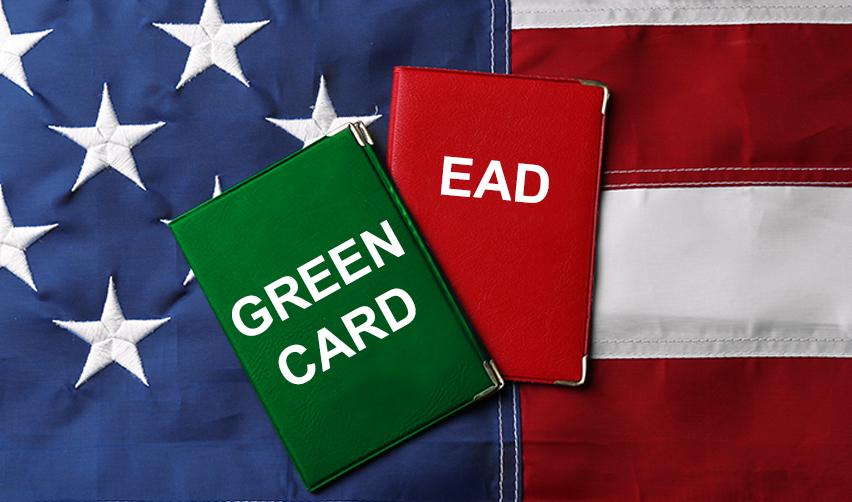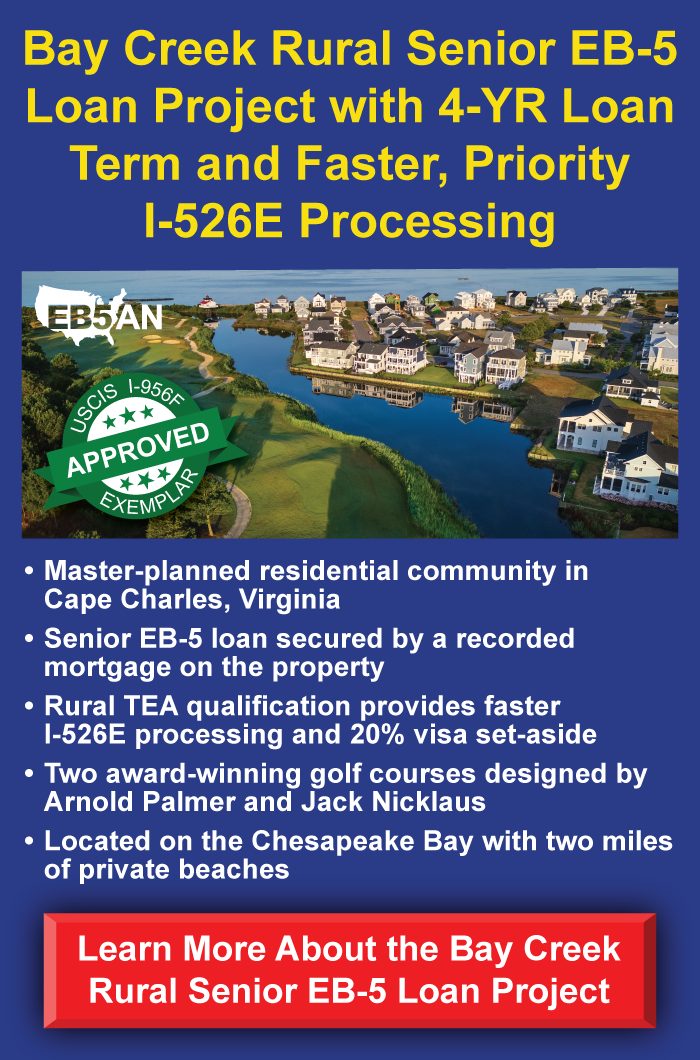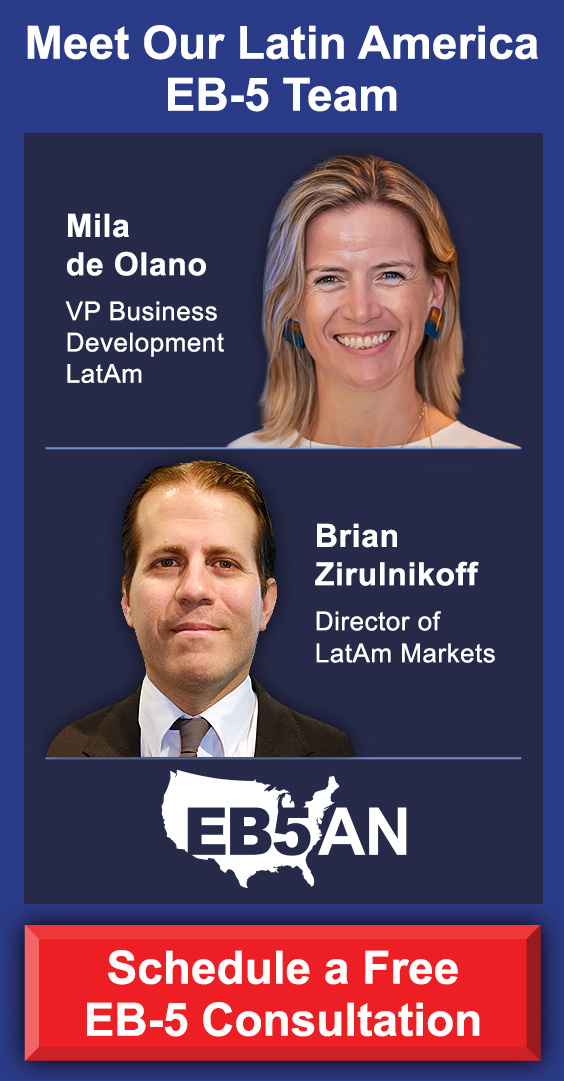EB-5 investors applying for permanent residency through adjustment of status can apply for an employment authorization document (EAD) along with their I-485 petition. The EAD is usually processed faster than the adjustment of status petition, allowing investors to work legally in the U.S. while awaiting their Green Card adjudication.
In this article, we’ll explain how an EAD works, its benefits, and how it differs from an EB-5 Green Card.
What Is an EAD?
What Is an EB-5 Green Card?
Differences Between an EAD and an EB-5 Green Card
Invest Today for a Quick EAD
What Is an EAD?
An EAD is an open work permit that grants holders the legal right to work for any U.S. employer. It provides broad work authorization, giving its holders freedom from the limitations of employer-sponsored work permits like H-1B, L-1, and F-1 OPT.
Within the EB-5 process, the main purpose of an EAD is to allow EB-5 investors to work legally in the U.S. while their Green Card application is pending approval. It offers the same work benefits as a Green Card.
After making the required investment, EB-5 investors already in the U.S. can file an I-765 (EAD petition) along with their I-485 and I-526E petitions. While the adjudication of an I-485 petition depends on the approval of an investor’s I-526E petition, EAD adjudication does not. USCIS starts processing this form almost immediately, and most investors receive their EADs in less than six months—many of our investors have received theirs within 90 days.
Note that you can only concurrently file for an EAD along with your EB-5 petition if a visa is immediately available to you. Given the impending visa backlogs, prospective investors, particularly those from high-demand countries like China and India, have limited time to make their EB-5 investment and secure an EAD.
Benefits of an EAD
An EAD offers investors several benefits. These benefits apply to principal investors and all derivative beneficiaries of working age—each of whom must apply for their own EAD.
The main benefits can be broken down into two categories:
- Work Flexibility: This is the most significant benefit of an EAD. It provides a broad work authorization that allows EB-5 investors to work for any employer without restrictions. With an EAD, you can work multiple jobs, start your own business, or combine a regular full-time job with a side business. Conversely, you can’t do any of these on a restricted work status like H-1B or F-1 OPT. The freedom of choosing any job you want also means you can choose where you and your family live without being constrained by the geographic limitations of a sponsoring employer.
- Social Security Number: An EAD enables you to obtain a U.S. Social Security number (SSN) if you don’t already have one. This is a significant benefit for certain EB-5 investors who have never held a U.S. work visa. An SSN allows you to integrate into the U.S. financial system. It enables you to open bank accounts, secure loans, and access credit opportunities. For example, obtaining a car loan or mortgage is much easier with an SSN.
How Long Are EADs Valid?
Previously, EADs were issued for two to three years. However, the USCIS policy update last year extended this timeline: EADs are now issued with a five-year validity, reducing the need for numerous renewals in cases of Green Card adjudication delays.
The new five-year validity aligns with the EB-5 Green Card timeline for most investors, especially rural targeted employment area (TEA) investors. And even if your Green Card is delayed for longer than five years due to visa retrogression, you can renew your EAD and continue enjoying employment flexibility until your Green Card is ready.
Once you receive your conditional Green Card, your EAD becomes invalid—but the Green Card comes with the same work benefits as an EAD, along with several other critical advantages.
What Is an EB-5 Green Card?
A Green Card is the popular name for the U.S. permanent residence card. This status grants foreign nationals the right to live, work, and study in the U.S. permanently and is a pathway to obtaining U.S. citizenship.
An EB-5 investment is one of the fastest routes to obtaining a Green Card. Foreign nationals are granted legal permanent resident status in exchange for their investment in the U.S. economy. After making the required investment and successfully filing all necessary petitions and documentation, EB-5 investors and their dependent family members will receive conditional Green Cards.
The conditional Green Card is valid for two years, after which investors and their derivative beneficiaries will file an I-829 petition to remove the Green Card conditions. Once USCIS approves investors’ I-829 petition, the conditions on their Green Card are removed, conferring legal permanent resident status.
A Green Card is valid for 10 years and can be renewed indefinitely. Importantly, though, Green Card holders can apply for U.S. citizenship after five years of legal residence. For EB-5 Green Card holders, the two years of conditional residence count toward meeting the five-year legal residence requirement.
Benefits of a Green Card
A Green Card offers more benefits than an EAD. Below are some of the benefits of an EB-5 Green Card.
- Permanent Residence: A Green Card gives you the right to live anywhere in the U.S.
- Work Flexibility: As with EAD holders, Green Card holders can work for any employer anywhere in the U.S. They can start businesses, work multiple jobs, and combine work with side businesses.
- Travel Flexibility: Green Card holders require minimal documentation to re-enter the U.S. after international trips. They can also enjoy extended stays abroad without risking their resident status.
- Family Sponsorship: If, for some reason, you couldn’t include your spouse or children in your application, you can sponsor them for a Green Card once you obtain yours.
- Educational Benefits: Green Card holders enjoy numerous educational benefits, such as lower in-state tuition, improved access to scholarships, grants, and other educational funding opportunities, and increased chances of admission into U.S. colleges and universities. These opportunities make an EB-5 visa much more attractive than studying as an international student under an F-1 visa.
- Social Benefits: With a U.S. Green Card, you can qualify for social benefits, such as Social Security, Medicare, and retirement benefits.
- Path to Citizenship: Green Card holders can apply for U.S. citizenship by naturalization after five years of continuous legal residence.
Differences Between an EAD and an EB-5 Green Card
Although an EAD and a Green Card offer similar work benefits, the overall benefits of an EB-5 Green Card far outweigh those of an EAD. An EAD is merely an intermediate solution in the EB-5 process. The key differences between them are as follows:
| Benefits | EAD | EB-5 Green Card |
| Validity | Five years (renewable). | 10 years (renewable). |
| Purpose | Work only. | Broader rights and privileges, including work authorization. |
| Travel | You’ll need to obtain separate travel documentation (advance parole). You can concurrently file for advance parole with your I-485 and EAD petitions. | Flexible travel with minimal restrictions. |
| Path to citizenship | No | Yes |
Invest Today for a Quick EAD
You can apply for an EAD at the same time as your I-526E and adjustment of status applications. An EAD enables you to legally work anywhere in the U.S. while USCIS processes your Green Card. However, you can only concurrently file for an EAD if you’re in the U.S. and an EB-5 visa is available when you file an EB-5 petition.
With the impending backlogs in the set-aside categories, investors from high-demand countries have limited time to benefit from concurrent filing. It’s best to invest soon to obtain your EAD and advance parole before the backlogs appear on the visa bulletin. This process often starts with reaching out to experienced EB-5 professionals like those at EB5AN.
EB5AN has helped more than 2,300 families from over 70 countries become lawful permanent residents of the United States. Our team has more than a decade of experience, and we offer our clients first-rate, low-risk EB-5 regional center projects with a 100% USCIS project approval rate.
For more information on how you can start the EB-5 process and get your EAD, schedule a free consultation with our EB-5 experts today.










